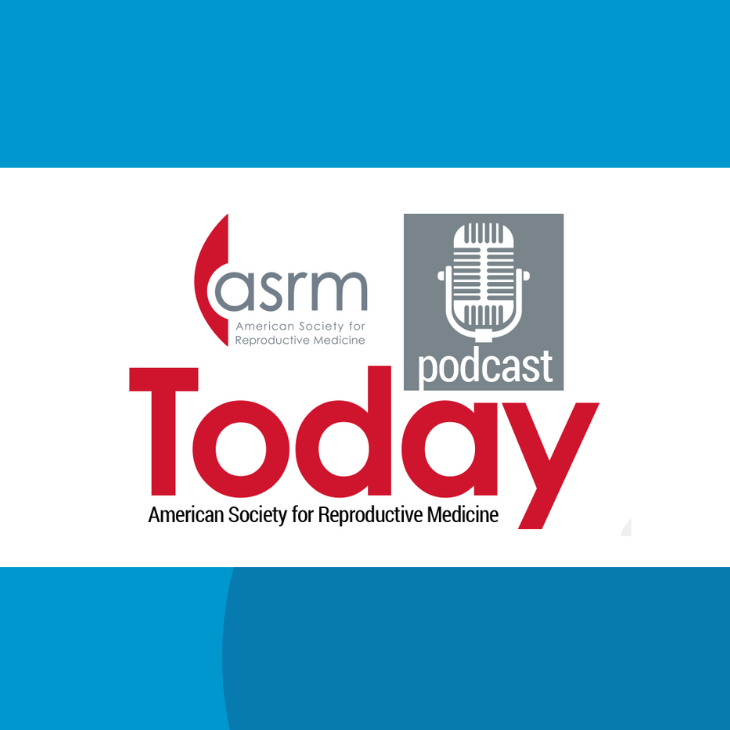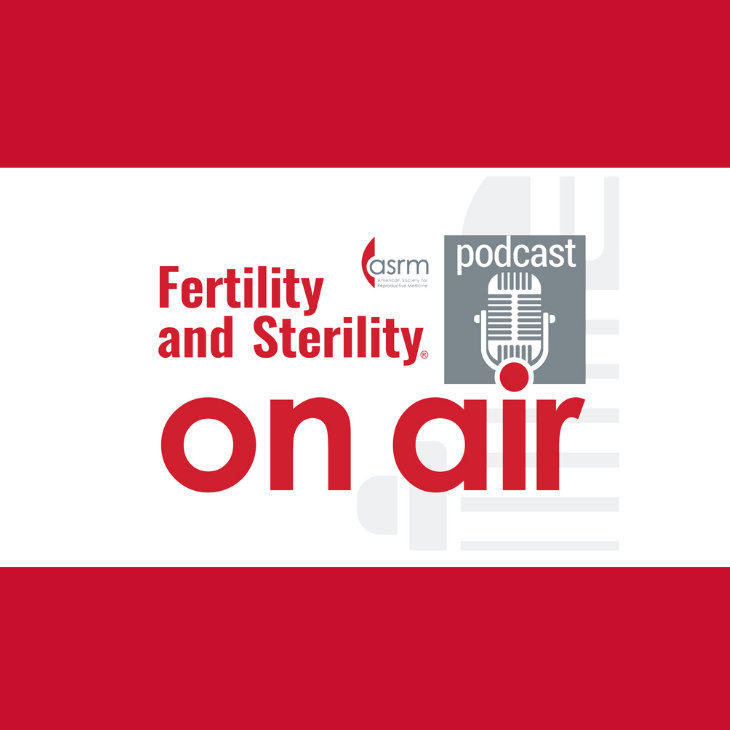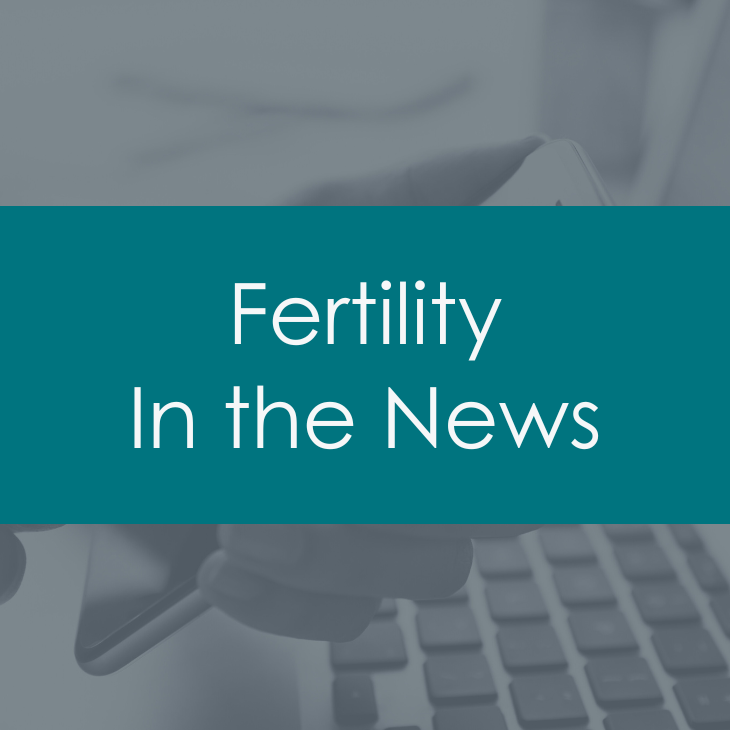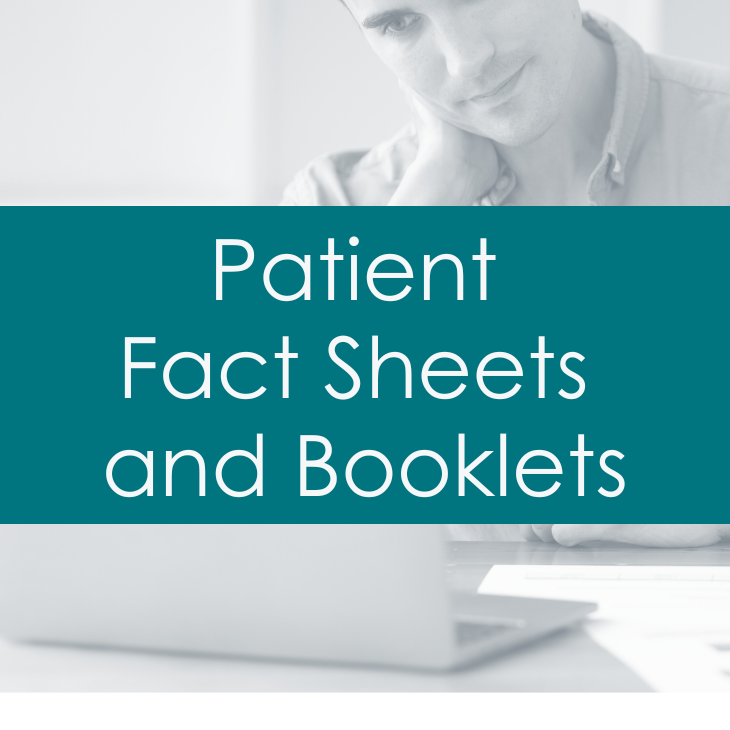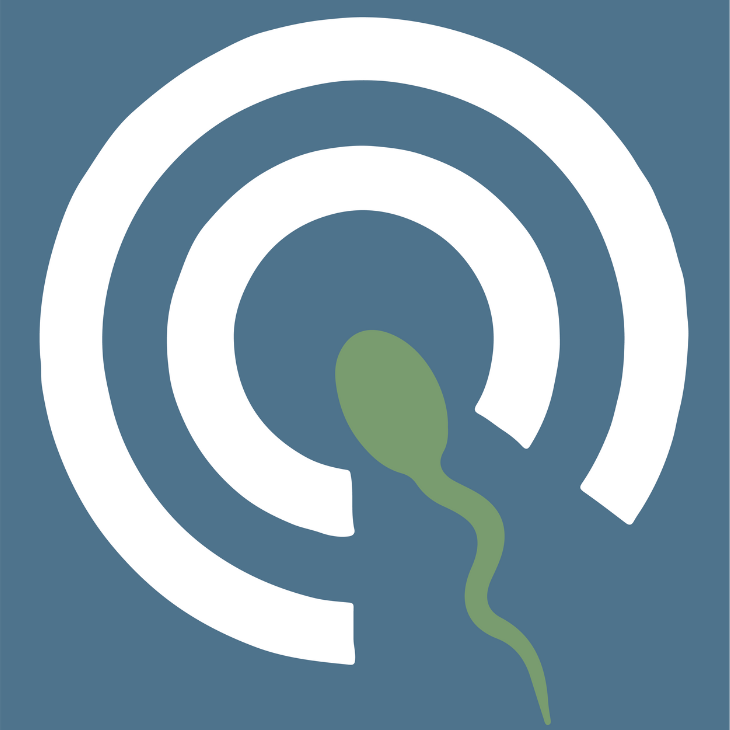
Transcript
How does the world we live in affect our health? In this episode, the fertility experts discuss the impact of the environment, including air, climate, and chemical exposures on infertility. They also discuss some ways to limit harmful exposure.
Hello, my name is Dr. Brooke Rossi, and we are doing an episode for SART Fertility Experts podcast series. I am a reproductive endocrinologist and infertility specialist in Columbus, Ohio. Dr. Mahalingaiah is an assistant professor of the Environmental, Reproductive, and Women's Health at Harvard T.H. Chan School of Public Health.
She specializes in ovulation disorders, reproductive endocrinology, and infertility. She is also a dear friend, and I'm really excited today to talk about fertility and environmental impacts of infertility. And so Shruthi, Dr. Mahalingaiah, thank you so much for being with us today.
Dr. Rossi, thank you so much for this invitation. Please call me Shruthi. It is such a pleasure to be here talking with you.
One of the goals of our podcast series was to include some topics regarding diversity, equity, and inclusion. And one of the aspects of that is actually the environment. So as you are well aware, and we'll be discussing today, the different locations that patients or people can live may have a direct impact on their overall health and their fertility.
So one of the things that we wanted to talk about, or do you have any feelings on sort of environmental, DEI, or sort of what that means to you? Absolutely. I think that there are a lot of different words or language we can use to describe what you call environmental DEI. My colleagues call it environmental justice.
It's also called disparities in exposure that are driving disparities in the outcome. And this gets at one of the things in epidemiology, one of my favorite types of science is geography is destiny, where you live can impact so much of your life. What we're seeing is we can do the climate example.
We know that heat stress and different kinds of climate related exposures is disproportionately affecting people of color compared to whites. We can also see that disparity trickle down into a variety of health effects from reproductive and non-reproductive causes. So when we have a difference in the exposure distribution that's that striking by a demographic factor, I think that it's very clear to see that kind of disparity.
I just learned at ASRM 2023 that this kind of disparity even exists in Europe and England and the UK. Apparently the NHS interprets and applies a variety of geographic factors in how people get access to fertility care. So if you're on one side of the street, you might be able to have coverage for three rounds of IVF.
But if you're at the end of that road and in different zip code, your fertility benefits change. Similarly, like even in Boston, one zip code, you might have extremely high traffic related air pollution. Whereas in another area, maybe even a mile and a half away, you might have much, much cleaner air, the best in the world.
That's really interesting. So before we actually get into some of the outcomes, I was wondering if you could spend a few minutes talking about how this research is done and maybe in the US or in other parts of the world. And then if there's any limitations of that research in our ability to interpret the findings.
Absolutely. So, you know, one of the interesting things translating kind of clinical research or the gold standard randomized control trial to environmental exposures is the concept of equipoise. If we think that there is an exposure that is harmful, it's very hard to design an RCT and expose half the people to a toxicant and the other half not and see what happens.
So just for our listeners, our, you know, patients and other people interested. So what's an RCT? An RCT is a randomized clinical trial where there is a group of randomly selected individuals. And the importance of randomness is that there's no bias.
So there is the same amount of white people, people of color, age across your groups of getting the placebo or the treatment. So of course, that would be really hard to achieve in the real world. We can do that in the lab or we can do that in medication trials.
But in the real world, it's hard to achieve that. Exactly. So we couldn't kind of, while I say this, but there's just been some innovative work right now with ethical coverage for heat exposure in pregnancy to understand really how far a pregnancy can be safe with heat exposure.
But other than that, we don't do randomization to high and low air pollution exposure or vehicle exhaust exposure. Just think of it that way. So a lot of what we do is look at observational data and try to define our question in terms of an exposure and an outcome.
And we can talk a little bit more about that. But air pollution is what I've worked on for a while, as well as endocrine disrupting chemicals. And then we think about biologically plausible outcomes.
And really, it has taken a while for the field to include reproductive health and some of the biological plausibility. So lung health, cardiac health, right? Yeah. And it took a really long time to kind of connect the dots with the philosophy that our bodies are completely interconnected.
And the uterus isn't in a safe place. Right. If it's affecting other parts of the body, it definitely could be affecting reproduction as well.
Yeah. And we have to have that bigger view when we're thinking about all of the things that we eat and drink and put on our bodies. I wanted to discuss a couple different topics with you that maybe patients have asked me about.
So I wanted to discuss environmental aspects, occupational aspects, nutritional aspects. What would you like to discuss first? Your choice. OK.
Well, tell me a little, since you've done some research on things like air quality, tell me a little bit about the environment. I mean, I have patients all the time saying, what can we do to help our fertility? And I feel bad because you just live where you live. But are there things that, you know, what have you learned in your research or are there things that people could do regardless of where they live to help? I think that there are small things and it's hard to quantify the impact because, again, we don't do those RCT type studies.
But I recommend that if, you know, wherever individuals live, they are able to know their air quality or at least even if you don't know what your air quality is, you know how often your filters are changed. If you have your if you own your own home, that's one thing you have control. If you're in a building or renting, you can ask the landlords to make sure that everything's on a schedule, that nothing is delayed in that kind of change over of the the filters, because that's critical.
And it's also, as we know, critical to have excellent HVAC in our embryology labs, you know, across the spectrum from. Yeah. So that's one thing.
Changing up those filters. I also run in my own home because we have a lot of allergies. Also, we have air filters running all the time and we do change those up as well.
What do the data tell us about air quality and fertility outcomes? So early studies and I worked on one early study looking at air pollution exposure and the risk of infertility. And there was a about 10 percent increased risk. The higher your air pollution exposure was, as well as the closer you live to a major roadway.
And some of the recommendations that we reflected on from that is, you know, don't take your jogs right in the middle of rush hour on a heavy vehicular path. And I do want to share a story kind of of hopefulness as well. Other types of natural experiments, like when coal mining facilities closed down and there were two natural experiments like this, both in California and in Pennsylvania, and the natural fertility rates and the birth rates increased in those areas where the coal mines had shut down.
So we can look at this in a couple of different ways, both negative and positive. But kind of when when there's enough data to suggest, you know, breathing clean air is good, doing the things to help, you know, facilitate air quality at home is very, very important and can help with other things, not just reproductive, but allergies and respiratory health. You had mentioned, I think earlier, some different information about heat.
Has there been any any studies on global warming and fertility outcomes and pregnancy outcomes? That is a great question. I think that literature is growing at this time as we've experienced the hottest temperatures on the planet. I did just receive an R01 funded grant to look at climate factors.
And that's like a national government grant? Yeah. Yes. That's great.
Thank you. And we are looking at climate related factors like temperature, humidity and air pollution in relation to menstrual cycle characteristics and ovulation disorders to kind of fill in the first piece of the puzzle at the egg health level. There's been so many studies on sperm function and sperm decline over the decades, but we haven't really been able to or maybe we've been able to.
But no one's really given it a good look because it's just so hard to understand oocyte quality. And we're looking at that through menstrual cycle characteristics. So I do think we're going to be learning more about it, unfortunately, from our natural experiment of climate change.
Right. What about anything that you have learned about water and like chemical exposure and water or that sort of thing? Are they forever chemicals that they're always talking about or forever plastics they're always talking about in the news? Well, unfortunately, this field is full of a whole host of, you know, single chemicals as well as mixtures of chemicals and what harmful effects they might have. And unfortunately, we don't always know that until it's been fully put out into the world.
Right now, what I'm thinking about is microplastics in our diet. There's some early literature linking microplastics in our food and increased weight gain. And I feel that, you know, when I hear my patients say that they've been on diets and they do a lot of exercise, but they're still, you know, they yo-yo or they just slowly creep every year.
I do wonder about the role of microplastic exposure as something that is driving that as well as other endocrine disrupting chemicals. Just before we move on, tell me what you mean by endocrine disrupting chemicals. Sure.
So the endocrine disrupting chemical is a chemical that can mimic the signals that our own endocrine hormones give. Yeah. So your hormonal system.
Exactly. And, you know, we know our reproductive hormones so well, like follicle stimulating hormone and estradiol made from the ovaries and LH with the ovulation predictor kit. So all of those hormones have receptors and chemical structures.
And a lot of times there are chemicals in nature and in personal care products or in, you know, processed foods that might mimic the actions of these hormones. So they look like the body's own natural hormones and that's why they're disrupting the. Exactly.
Normal functions of the hormone system in the body. Yeah. So they can either act exactly like them or act opposite to them or have mixed effects where they do kind of both pathways, but in different scenarios.
So it's a little complicated even to study. And then there are thyroid disrupting chemicals and adrenal disrupting chemicals. So you can have a lot of exposures that might pose a concern.
Yeah. And you had just mentioned in microplastics, maybe in food, and that would be a good topic because we did want to talk a little bit about nutrition. Tell me a little bit about what you've learned in terms of the environment.
We are thinking kind of the world environment, but also very local. So what are people eating or drinking that have been found to be associated with fertility issues or like plastics and that sort of thing? Absolutely. Well, there's just one story I wanted to share before we jump into kind of choices to make.
So there was a recent study published that showed the microplastics in placenta over like a 25 year span in Hawaii. And around Hawaii, there's this thing called the oceanic garbage patch. And what the researchers found was that compared to earlier placentas where maybe there was a 40% of placentas found with microplastics embedded in the placenta, by the end of the study, all placentas had microplastics.
They had microplastics of even more concerning chemical distributions because microplastics are degraded from a variety of things. So if there are microplastics that are in the placenta and hopefully they're shielding the baby, but we don't know yet. So when you say microplastics, you're talking about molecules of plastics that are so small that they're floating around in our bodies? So nano, like smaller than a micron.
Wow. Okay. So they're floating in our blood.
We somehow consume them or got them from our clothes or something. Yep. And wow, they're even in our reproductive system.
Okay. So like all of our single use plastics and coated cups, cutlery, food packaging will have polymers that can break down whether they're plastics or plasticizers, making them kind of firm or soft. All of these contribute to kind of the body burden.
Plastic bags, balloons, you know, think of anything in your house that's plastic. So they're finding this. So they're finding the distribution of all these types of plastics, balloon source plastics, cup source, you know, plastic bag plastics, all in the placenta.
So, and then in terms of the recent study, which was done in mice or an animal model, you know, what I'm thinking about is like one of our body's protective mechanisms is to, um, use our fat, you know, use our adipose tissue to sequester or remove some of these toxicants. So like it's a protection. And so we do think of, you know, high weight or increased weight as a disorder.
And there are certain problems that people develop health-wise from higher BMIs and weight, but it, it could be our food quality. To the environment that we're in and the things we're exposed to. We've talked a little bit about that there may be more data and research on sperm.
In general, what kind of things do you talk to your patients about in terms of environment and sperm quality and maybe environment and egg quality? So, you know, are there different recommendations for men or women? Right now I do kind of a combined couples approach to counseling when it's, when the couples are coming in and, and individually too, cause the male partners often ask, like, is there anything I can do? You know, what supplements can I take? So I start with like the minimum physical activity requirements. You know, I really ask people to get in their physical activity. If it, if we have to start at the minimum, we start at the minimum 30 minutes a day, break a sweat, grow from there for, you know, nutritional choices.
I try to recommend going with whole foods, you know, unprocessed foods. So this, for some people will require a whole lifestyle shift because oftentimes people are eating on the run, they skip meals, you know, and that can alter your circadian rhythms and how your body perceives stress. And I think there's also a level of like protective fat as well in terms of health.
So you mean like when you say protective fats, do you mean like, like plant fats, like avocado and nuts and that sort of thing? Yes, I do. Okay. Yeah.
Yeah. It is hard sometimes to talk about, about nutrition with patients. And so you have to kind of tell them unprocessed things, fruits, vegetables, that sort of thing.
And I just think it's so hard right now to know what is safe. And I have this problem and I, you know, you can't, you can't ask people to read the back of a package you don't really know. Right.
So I think that there is some innovation happening. There is this app. I just, my kids found it actually.
It's called YUCA, Y-U-C-A, and it scans your barcode in the supermarket and also scans personal care products. And it brings up the risk level and a substitution. So it kind of takes some of the processing out.
I haven't vetted the whole thing, but they have a toxicologist and I thought that that was a nice next step. And, you know, we don't know where the cows that produce our milk graze and, you know, it's like a global economy. We don't know what is in other countries that might be lacing the, you know, food supply and we can't grow our own foods.
I definitely have. There is, it is difficult because it is, um, feel there is a loss of, I feel like a feeling of a loss of control when, you know, you want to do the, the patients, they want to do the right thing. They want to eat food that's good for them.
Yeah. But I agree. Like, how do you know where your food comes from? So that's why I. I mean, starting with vegetables first is always, I mean, I, everyone can take an extra vegetable, you know? So instead of, I mean, I just try to remind people that there's so much of this they don't have any control over, but if they can try to, you know, try to make the choices they can make small steps, like, you know, try to have not drink out of plastic, not use plastic products.
That's, that's a good start. You know, I don't microwave in plastic. The micro particles that come from that are just very high.
And then I, you know, when I meet couples, I often am asking both the man and the woman what they do for work. Um, cause I'm, I'm always interested in potential environmental or occupation exposures. Yeah.
I'm wondering if you've learned of any impact or done any research on that. Yeah. I think it's critical to always know where your patients are working to kind of get at like what occupational exposures they may be having.
When I do hear that there may be an occupational exposure, maybe it's like construction. I want, I ask about protective wear. So what kind of construction are they wearing? The mask? What kind of, you know, if it's in metallurgy or.
Like a plastics factory or, you know, or like I sometimes will ask patients, they'll say they work in a factory or a place where there's chemicals and I'll say, can you smell them? Like, are you smelling them or inhaling them all day long? I think that's, that's kind of a way to understand exposure. Same thing. Nail salon workers.
Yeah. And they, you know, again, you have the job that you have, like you live where you live. Yeah.
So I think that's why it's important to try to do all the little things that you can do when you feel like you can't just get a new job or live in a different place. Or have your employer, you know, update the HVAC so that you don't smell the toxic fumes. It's very hard.
I mean, that's not an ask you can give a patient or a couple that's probably doesn't barely have time to come into the hospital or a clinic for the visit. Well, I think that, um, are there any, I just have two more, two more questions for you. One, are there any new emerging areas of research that you know about or things that are kind of on the horizon in this area of research? I think there's a lot of kind of biosensing technology coming down the pipeline.
What's biosensing technology? So from things like we know about, so from vital signs sensing to even things that may have more real time hormone outputs. There's a lot of startups that are doing direct to consumer kind of exposome profiling. So I think that there may be things that people can do coming down the pipeline.
I don't know, you know, each kind of innovation may need to be tested a little bit for validity, but the second piece is we're learning more about how far these chemicals get in our body. And I'm really hopeful that this will provide data for policy change. So a recent study from my group showed that we can detect PFAS in menstrual blood.
And so if you can imagine if that, what's PFAS? Oh yeah. PFAS is a chemical that, um, has mixed properties. It's not really able to be excreted well in urine, which is a common way we detoxify ourselves.
And it's also not super well excreted in fat or sequestered in fat. So it's circulating. It has endocrine disrupting effects and it's a persistent chemical.
So it's hard to break down. And yeah. Wow.
So, I mean, we're saying, I mean, clearly these are in our bodies, right? They're in a reproductive system if we're seeing them in the placentas and we're seeing them in our menstrual blood. Okay. So that's, that will be interesting.
Hopefully this body of knowledge can move our regulations to, you know, uh, value health over profits and value health to support innovations. And some of, you know, the changes that need to happen are at a social and societal level for the disparities that we see for the way we live our lives. Like everything's a rush and, you know, just being human and, and tuning into your digestive system and how long it takes to die, you know, all of that takes time.
And sometimes we do need to slow down and be aware of our bodies and just trust them to feel, you know, if, if something doesn't feel right and stop using it. Well, I think that I have been very informed by this talk and some of it has been very enlightening. Some of it's been kind of scary too, because it is, again, it feels a little bit disempowering to hear about all the things that are around us.
So maybe I would ask you to end on the most hopeful note you can in sort of, as you've mentioned earlier in the talk, you've seen some positive changes. What do you think is the most positive thing you've seen that we can end on a hopeful note for our listeners? I think that there are so many positive things. I think some of the positive things that I get my energy from is from conversations like this and increasing awareness of the interconnectedness of our bodies and our environment and building resilience and growing our families in the most healthful way that we can.
So I would say, in addition to kind of trying to make the best choices we can within our limitations is also, for me, I see more people engaging in meditation and seeking out things that will promote their physical activity. I think the, not only that at an individual level, but shifting from kind of fossil fuel to other sources of energy is exciting to see. Well, great.
Well, Dr. Mahalingaiah, thank you so much for discussing the environment and fertility with me today. And again, my name is Dr. Brooke Rossi, and this is the SART Fertility Expert podcast series. Thank you so much.
Thank you. The information and opinions expressed in this podcast do not necessarily reflect those of ASRM and its affiliates. These are provided as a source of general information and are not a substitute for consultation with a physician.
For more information about the Society for Assisted Reproductive Technology, visit our website at https://www.sart.org
Have a topic you'd like to hear? Tell Us!
Subscribe to the SART Fertility Experts Podcast on iTunes, Spotify, Google Play, or your favorite Podcast catcher.
Visit the podcast website and Start With SART!
SART Fertility Experts is part of the ASRM Family of Podcasts. Subscribe Now so you don't miss an episode!
SART Fertility Experts Podcast
SART Fertility Experts is an educational project of the Society for Assisted Reproductive Technology, this series is designed to provide up to date information about a variety of topics related to fertility testing and treatment such as IVF.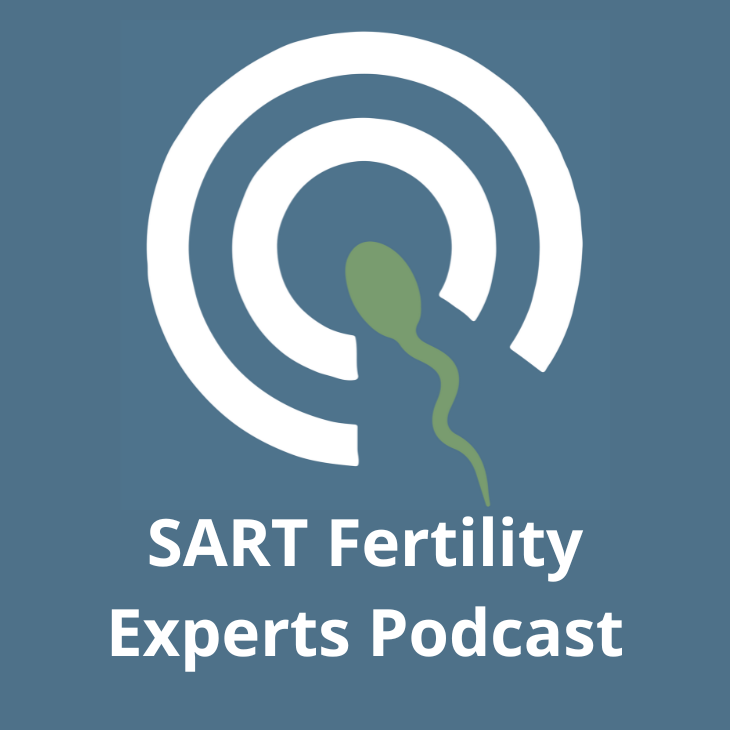
SART Fertility Experts - Military Families and Fertility
Active-duty individuals in the military sometimes face unique circumstances when seeking fertility care. Learn more with a former military fertility physician.
SART Fertility Experts - Q&A on Infertility
Infertility can create many questions for a patient. Listen to common questions and answers about infertility, egg freezing, and genetic testing.
SART Fertility Experts - Vanquishing Multiples
Learn how a variety of factors such as geography, race, and the availability of comprehensive infertility mandates affect access to effective infertility treatment.
SART Fertility Experts - Global Access to IVF and the Status of Women
Around the world, there are vast differences in the number of IVF cycles performed per capita. Learn why these differences exist.Environmental Factors
Find a Health Professional


